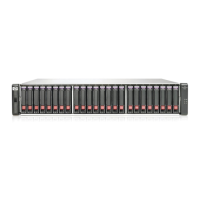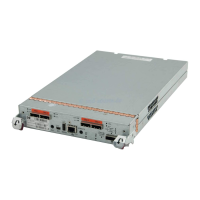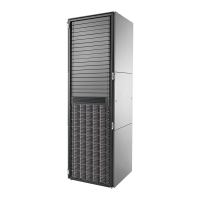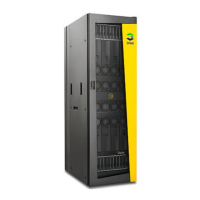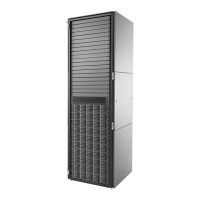22 Using the CLI
Command syntax
Command names and parameters
Command and parameter names are not case sensitive.
Parameters enclosed in square brackets ([]) are optional. Do not type the bracket characters.
Parameter values separated by ’|’ characters are options. Enter only one of the values. These values are
not case sensitive.
Parameter values in italics are variables. Substitute text that is appropriate for the task you want to perform.
Variable values such names of users and volumes are case sensitive and have a maximum length in bytes.
ASCII characters are 1 byte; most Latin (Western European) characters with diacritics are 2 bytes; most
Asian characters are 3 bytes.
Unless otherwise specified, a parameter value can include printable UTF-8 characters except angle
brackets (<>), backslash (\), comma (,), and double quotes ("). A parameter value that includes a space
must be enclosed in double quotes.
Parameters can be entered in any order. However, if the value of a parameter with no keyword is the same
as the keyword of an optional parameter, the optional parameter must precede the value. For example, to
create a vdisk named spare, the spare parameter must precede the name value spare:
create vdisk level raid5 disks 1.10-12 spare 1.7 spare
Disks
Disks are specified by enclosure ID and slot number. Enclosure IDs increment from 1. Disk IDs increment
from 1 in each enclosure. You can specify:
• A disk. Example: 1.4
• A hyphenated range of disks. Example: 1.4-7
• A comma-separated list of individual disks, ranges, or both (with no spaces). Example: 1.4,1.6-9
• A RAID 10 or 50 vdisk, with disks in sub-vdisks separated by colons (with no spaces). RAID-50
example: 1.1-3:1.4-6:1.7,1.10-11
Vdisks
You can specify:
• A vdisk by its name or serial number. A unique serial number is automatically assigned when a vdisk is
created, and does not change for the life of the vdisk.
• A list of vdisk names or serial numbers separated by commas (with no spaces). Not all commands
support lists. List example: vd1,"My vdisk"
Volumes
You can specify:
• A volume by its name or serial number. A unique serial number is automatically assigned when a
volume is created, and does not change for the life of the volume.
• A list of volume names or serial numbers separated by commas (with no spaces). Not all commands
support lists. List example: vd1_v1,"Vol #1"
Ports
Controller host ports are specified by controller ID and port number, and are not case sensitive. Controller
IDs are A for the upper controller and B for the lower controller. Port IDs increment from 1 in each
controller module. You can specify:
• A port ID. Example: A1
• A hyphenated range of IDs. Do not mix controller IDs in a range. Example: b1-b2
• A comma-separated list of IDs, ranges, or both (with no spaces). Example: A1,b1-b2
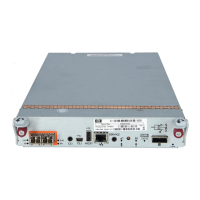
